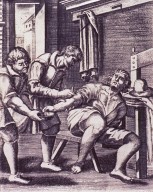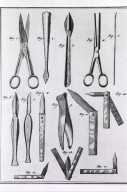Throughout history, insane people have typically received the short end of the medical stick. They were often feared and loathed by the community, which couldn’t understand their behavior. The best they could hope for was a little physical care, or at least to be left alone.
Dr. Benjamin Rush (Dec 24, 1745 – Apr 19, 1813) was America’s leading physician. He tried to improve the health of the general population and worked tirelessly to help victims of the 1793 yellow fever epidemic. He also championed the cause of the mentally afflicted and insisted that they be treated with respect. Rush was so outraged by the inhuman treatment most insane people received that he agitated for–and won–funding for an insane ward at Pennsylvania Hospital.
However…Rush believed that most disease originated with problems in the circulatory system–which could be brought back into balance by bloodletting. The first thing he did with patients suffering from “maniacal excitement” was to bleed them. Not surprisingly, this treatment was very effective at calming them down.
Though Rush’s reliance on bloodletting fell into disfavor, the idea of keeping insane people calm did not. Under a mental health care system that was mainly custodial in nature, a quiet patient made things easier for everybody. Bloodletting gave way to etherization, which means exactly what you think it does–compelling a patient to breathe ether in order to induce calm.









I am glad I was able to find your post! I really appreciate the information! Would you mind terribly if I place a backlink from my site ?